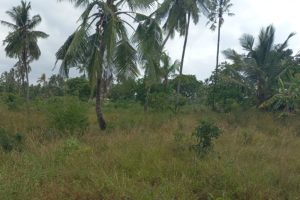What is an EIA?
Environmental Impact Assessment (EIA) refers to a process of examining the likely positive or negative environmental, social and/or economic impacts of a project that is being planned. e.g. proposed industry development, multi-residential development, etc.
Why is EIA carried out?
The following are reasons an EIA is carried out:
- To identify the likely impacts (negative or positive) of a project being planned;
- To assist NEMA in deciding whether to grant or deny a license to proceed with the project;
- To identify and plan for measures that avoid, reduce or compensate for identified negative effects of the project under planning stage as well as maximize the positive impacts (benefits) of the proposed project
The main objective of carrying out an EIA is to assess the biophysical, socio-economical and human health consequences of the proposed project both in the construction, operation and maintenance phases.
Specific objectives of EIA
- To assess the adverse environmental impacts of the project both negative and positive
- To advise the proponent on appropriate mitigation measures for significant negative biophysical and socio economic impacts anticipated from the project, including the need for proper and functioning committee for the management of the facilities for sustainability among other things.
- To develop an Environmental Management Plan to guide the construction and operation phase of the project with a mechanism for monitoring and evaluation
In summary, the Environmental Impact Assessment help shape the management of environmental, social and human rights impacts for the life of a project.
Who carries out EIA?

Environmental Impact Assessment (EIA) is carried out on behalf of the owner of the proponent by a team of experts led by Environmental Experts (i.e. EIA/EA Lead Experts) registered and licensed by NEMA.
Once the assessment is carried out, the report is submitted to NEMA for processing. NEMA reviews the report and decides whether to allow or not allow the project to proceed.
When is Environmental Impact Assessment required?
According to TRANSPARENCY INTERNATIONAL KENYA 2020; ENVIRONMENTAL IMPACT ASSESSMENT PROCESS IN KENYA SIMPLIFIED HANDBOOK
“Under Kenya’s environmental laws, Environmental Impact Assessment is required for all projects that are likely to have a negative effect on the environment. The law classifies these projects into three groups according to the seriousness of their likely effects, namely: Low Risk, Medium Risk, and High-Risk projects.
The full list of projects classified under these three categories is outlined in the Second Schedule of the Environmental Management and Coordination Act. Where a planned project does not fall in any of the three categories as outlined in the Second Schedule of the Environmental Management and Co-ordination Act, the owner of the proposed project may, where in doubt, write to NEMA for guidance on whether such a project requires an Environmental Impact Assessment or not. In case the project does not require Environmental Impact Assessment, NEMA will issue a clearance letter or letter of no objection to the project owner.
The community or interested parties may request the owner of the proposed project to furnish them with this letter for avoidance of doubt. For the low and medium risk projects, the owner is supposed to submit a summary project report of the likely environmental effect of the project to NEMA.”
Examples of projects that require an EIA
Low Risk: Sport facilities, stadia, social halls; community boreholes; dispensaries, health centres and clinics; livestock holding grounds and cattle dips; expansion or rehabilitation of markets; car and bus parks; cottage industry, jua kali sector and garages among others
Medium Risk: Artisanal and small-scale mining including quarrying of precious metals and gemstones; limestone and dolomite; harvesting of aggregate, sand, gravel, soil, clay, stone and slate; gypsum; pozollana and carbon dioxide tourism and related infrastructure; shopping centers, commercial centers and complexes, business premises, shops and stores not exceeding ten thousand square meters among others
High Risk: Artisanal and small-scale mining including quarrying of precious metals and gemstones; limestone and dolomite; harvesting of aggregate, sand, gravel, soil, clay, stone and slate; gypsum; pozollana and carbon dioxide tourism and related infrastructure; shopping centers, commercial centers and complexes, business premises, shops and stores not exceeding ten thousand square meters among others.
In case you find the article useful and would like to support me, you can buy me a coffee ☕



